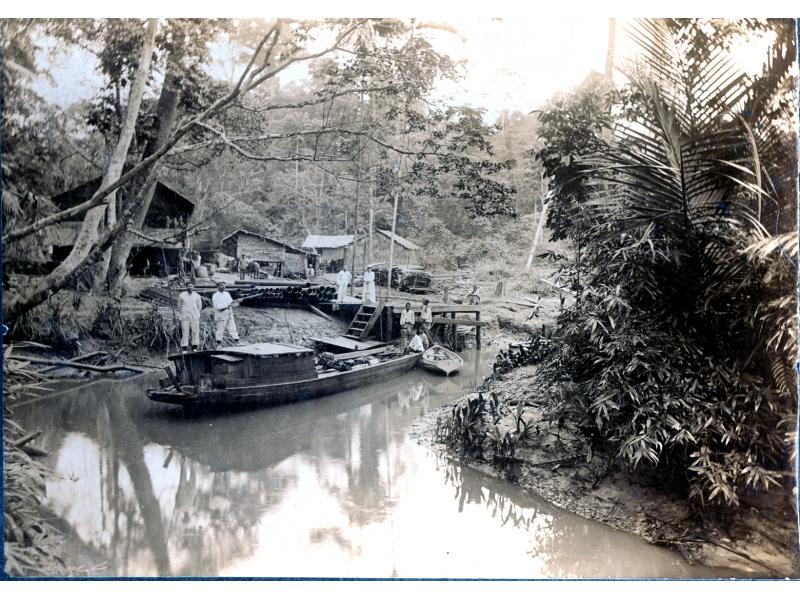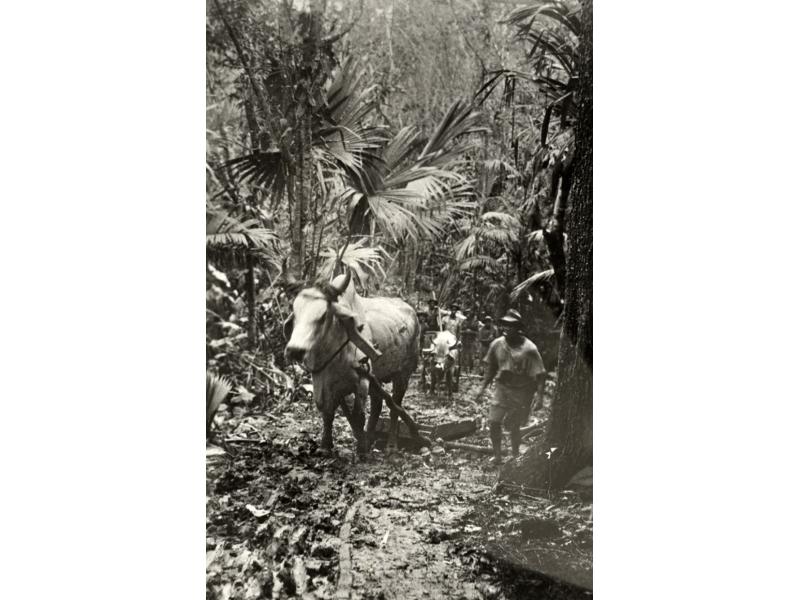Add new comment
John Egerton Crosbie was born and raised in Petrolia where he learned the Canadian pole-tool drilling method from his uncle, J.W. Crosbie. He accompanied his uncle in the late 1890s to Sumatra where they played an instrumental role in establishing the use of the Canadian pole-tool drilling method. Together, their efforts were met with much success. J.E. Crosbie found an oil gusher which produced 3,000 barrels of oil per day and took almost two weeks to get under control. After the first wells were established deep in the jungle, they built a 125-mile pipeline from the wells down to a newly-constructed refinery on the shore of the sea.
Unfortunately, J.W. Crosbie died in Sumatra in 1899, leaving J.E. Crosbie to continue the project on his own. His worked with a team of Chinese labourers deep in the jungle and frequently went months without hearing a word of English. Edward Winnett often noted Crosbie’s reappearances in his journal and was always happy to see him safely emerge from the jungle.
One of the great difficulties that many of the International Drillers had to face was the challenge of transporting equipment from the nearest port to the site of their operations. Crosbie found it very tedious that every piece of steel for their pipeline and all the materials and supplies for their camp had to be carried from the coast up streams and rivers, and finally over land on pack-animals or by labourers. It seems that after his uncle’s death, this task grew increasingly frustrating on top of the oppressive heat and Crosbie made arrangements to leave Sumatra.
His next destination was West Africa where he prospected for oil. Unfortunately, the climate of West Africa was no better than Sumatra, being full of swamps and the threat of catching a deadly fever was high. Crosbie did not find any significant sources of oil, and so he moved onto Germany where his brother was working before finally returning to Petrolia.
He next set his sights on the United States which would prove to be a very successful move for Crosbie. He first went to Beaumont, Texas where oil had recently been discovered at Spindletop. After drilling over 100 oil wells, all said to have been successful, he travelled to Glenpool, Oklahoma where he purchased a few land leases and was soon producing 6,000 barrels of oil per day. In 1907, an article stated that his income was $1,000 per day. He continued with his successful business until his death in 1938 in Tulsa, Oklahoma.



 A group of International Drillers unload pipe from a small boat at the site of a drilling camp. One of the main difficulties encountered by J.E. Crosbie was the challenge of transporting equipment and supplies to the drilling site.
A group of International Drillers unload pipe from a small boat at the site of a drilling camp. One of the main difficulties encountered by J.E. Crosbie was the challenge of transporting equipment and supplies to the drilling site.  Once equipment was unloaded at the river's edge, it was transported through the jungle. Here, oxen are pulling blocks of wood along a path through the jungle to create a road.
Once equipment was unloaded at the river's edge, it was transported through the jungle. Here, oxen are pulling blocks of wood along a path through the jungle to create a road.